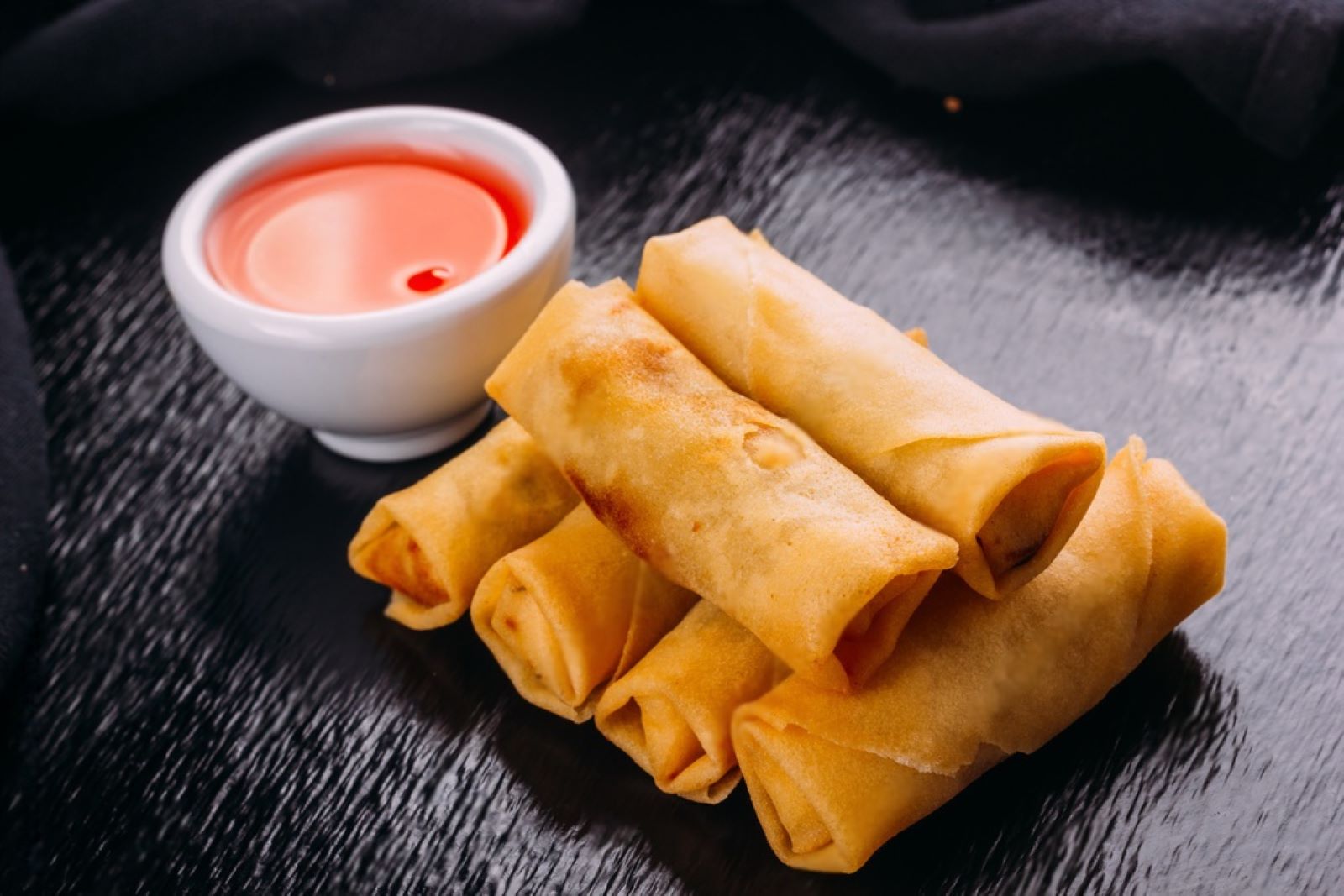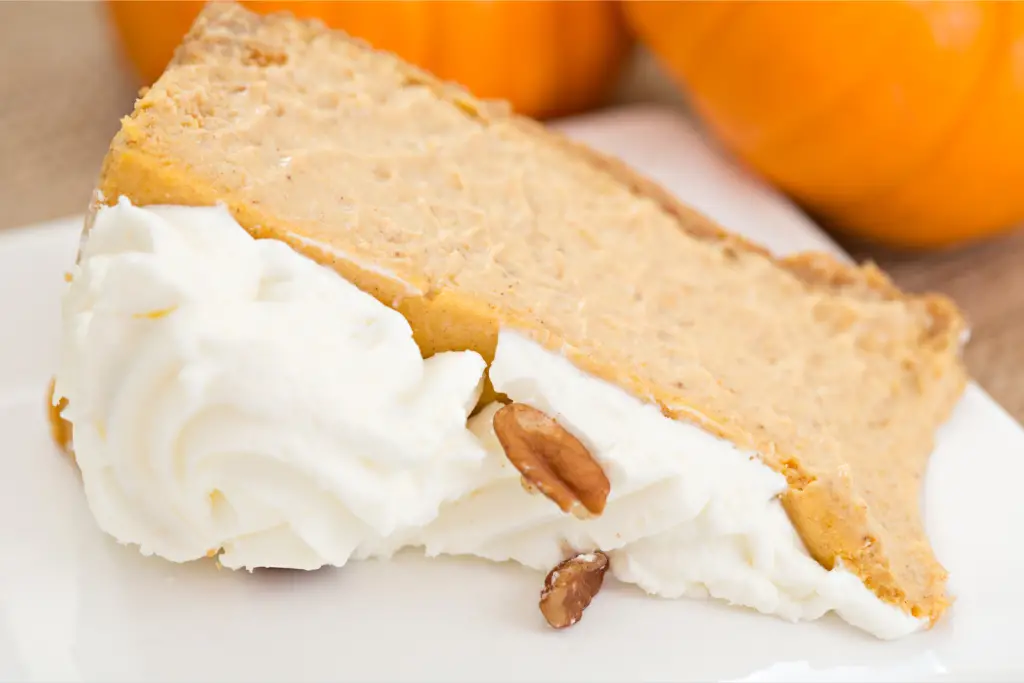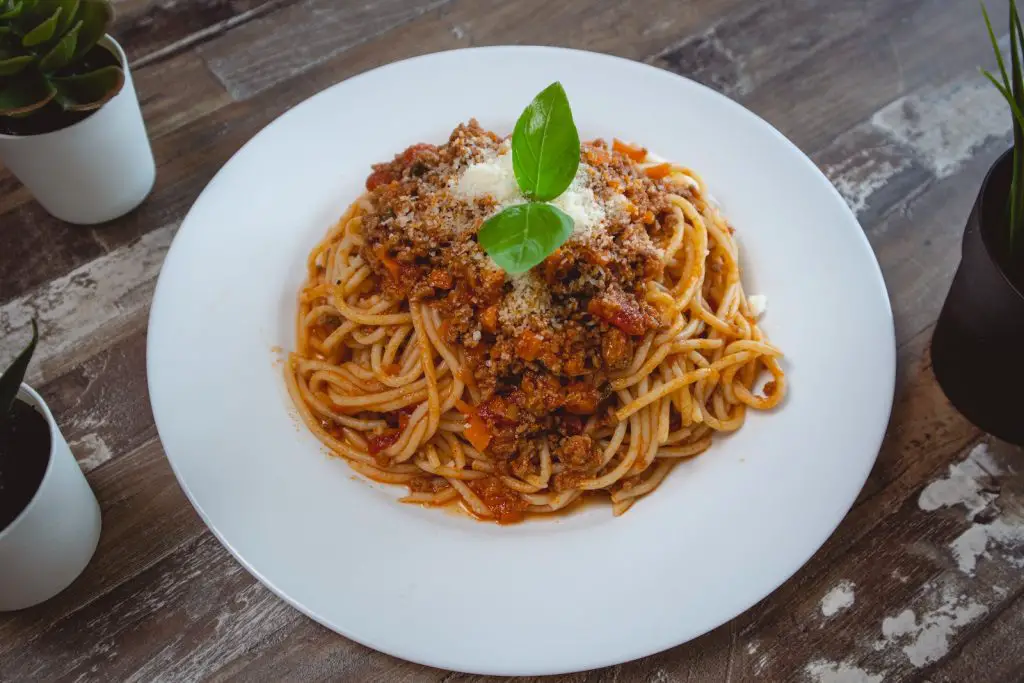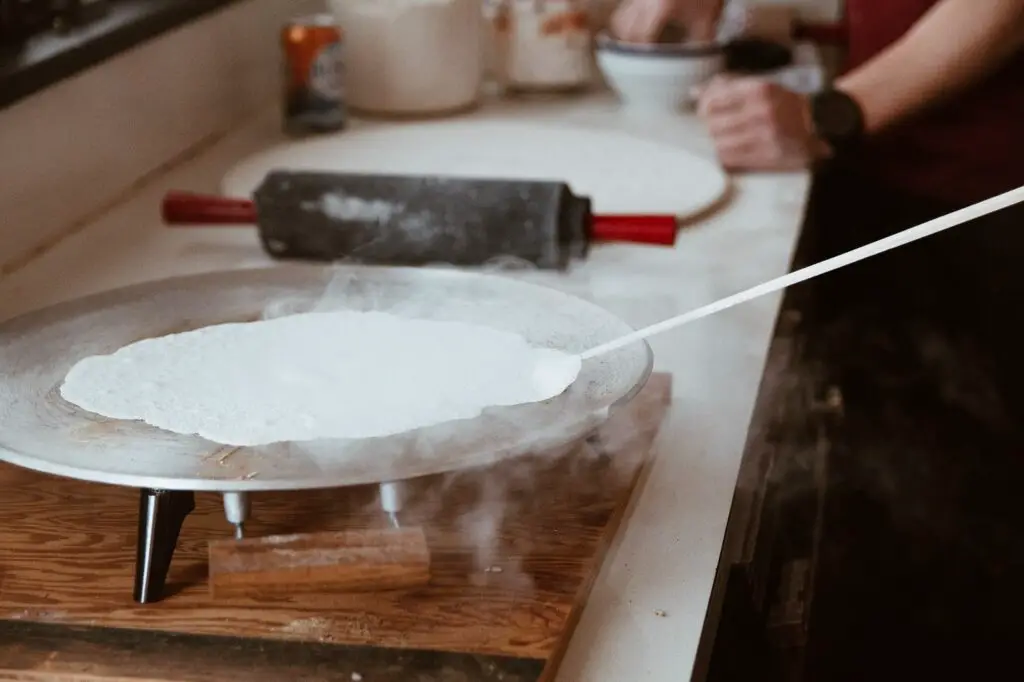
Lumpia is a popular Filipino dish consisting of thin wrappers filled with a variety of ingredients, such as vegetables, meat, and spices. These crispy and flavorful spring rolls are enjoyed as appetizers or main courses. If you find yourself with a surplus of lumpia or want to prepare them in advance for future enjoyment, freezing them is an excellent option. Freezing lumpia allows you to have a convenient and ready-to-cook snack or meal whenever you desire. By following a few simple steps, you can freeze lumpia while preserving their taste, texture, and quality. In this article, we will provide you with a comprehensive guide on how to freeze lumpia effectively.
Here’s a step-by-step guide on freezing lumpia:
Step 1: Prepare the lumpia
Before you can freeze lumpia, it’s crucial to ensure that they are fully cooked and properly assembled. This involves filling and rolling the wrappers with your preferred ingredients and cooking them until they achieve a golden and crispy texture. Properly cooked lumpia will not only enhance the taste and texture but also ensure that they freeze well and maintain their quality during storage.
To prepare the lumpia, follow these steps:
- Choose your ingredients: Decide on the filling you want for your lumpia. Common options include ground meat (such as pork or chicken), vegetables (such as carrots, cabbage, and bean sprouts), and seasonings (such as garlic, onions, and soy sauce). Prepare and cook the filling ingredients according to your desired recipe.
- Assemble the lumpia: Take a lumpia wrapper and place it on a clean, flat surface. Spoon a portion of the cooked filling onto the wrapper, leaving a small border around the edges. Fold the sides of the wrapper over the filling, then roll it tightly from bottom to top, sealing the edges with a bit of water or egg wash.
- Cook the lumpia: Heat oil in a frying pan or deep fryer over medium-high heat. Carefully place the rolled lumpia into the hot oil, seam side down, and fry them until they turn golden brown and become crispy. Flip them occasionally to ensure even cooking. Once cooked, remove the lumpia from the oil and let them drain on a paper towel to remove excess oil.
Properly cooking the lumpia before freezing is essential to ensure that they are fully cooked and have the desired texture. Freezing uncooked lumpia is not recommended, as it can lead to uneven cooking or a soggy texture when thawed and cooked later.
Can I freeze lumpia for a large event in advance, and how far in advance can I do it?
Yes, you can freeze lumpia in advance for a large event. It’s a great way to save time and ensure that you have enough lumpia on hand. You can freeze lumpia up to three months in advance, provided that it is properly packaged and stored in the freezer. This allows you to prepare and freeze the lumpia ahead of time, giving you more flexibility and convenience when it comes to event planning and preparation.
Step 2: Cool the lumpia
After cooking the lumpia to perfection, it’s important to allow them to cool completely before freezing. Placing hot lumpia directly into the freezer can result in excess moisture accumulation, which can lead to a soggy and undesirable texture when thawed and reheated. Cooling the lumpia to room temperature before freezing helps preserve their crispness and maintain their overall quality.
Here’s why cooling the lumpia is crucial before freezing:
- Moisture control: Hot lumpia tend to release steam, and if they are immediately placed in the freezer, the trapped moisture can condense and form ice crystals. This can result in a loss of texture and crispness when the lumpia are thawed and reheated. Allowing the lumpia to cool at room temperature helps to minimize the moisture content, reducing the risk of sogginess during the freezing process.
- Temperature equilibrium: Cooling the lumpia allows them to reach a temperature closer to that of the freezer. Placing hot lumpia directly into the freezer can cause temperature fluctuations, which can affect the surrounding frozen items and potentially impact their quality. Allowing the lumpia to cool naturally helps maintain the stability of the freezer environment.
To cool the lumpia properly:
- Transfer the cooked lumpia to a clean plate or wire rack: This will help facilitate air circulation around the lumpia, allowing them to cool evenly.
- Avoid covering the lumpia: Keeping the lumpia uncovered during the cooling process prevents moisture buildup and helps maintain their crispness.
- Leave them at room temperature: Allow the lumpia to cool naturally for about an hour or until they reach room temperature. During this time, the excess heat will dissipate, and the lumpia will gradually cool down.
Can I freeze lumpia that has been baked instead of fried?
Yes, you can freeze lumpia that has been baked instead of fried. Baked lumpia can be frozen in the same manner as fried lumpia. Allow the baked lumpia to cool completely before packaging them in airtight containers or freezer bags. Freezing preserves the baked lumpia’s texture and flavor, and you can reheat them by baking in the oven or frying to achieve a crispy exterior.
Step 3: Arrange the lumpia for freezing
Once the lumpia have cooled completely, it’s time to arrange them for freezing. Properly arranging the lumpia on a baking sheet or flat tray with parchment paper helps prevent them from sticking together during the freezing process. This step ensures that the individual lumpia maintain their shape and can be easily separated when you’re ready to cook them.
Here’s why arranging the lumpia is important:
- Prevent sticking: Lumpia wrappers can be delicate and prone to sticking together when frozen. By spacing out the cooled lumpia on a tray, you create enough room between them to prevent them from coming into contact and sticking together during freezing. This is particularly important because lumpia can be difficult to separate once they freeze together, leading to damaged wrappers and an uneven cooking experience.
- Maintain shape: Placing the lumpia on a flat tray ensures that they maintain their individual shape while freezing. If lumpia are piled on top of each other or placed in a crowded container, they can become misshapen or flattened, compromising their appearance and texture. By arranging them in a single layer with ample space, you preserve their form and ensure a more visually appealing result when cooked.
To arrange the lumpia for freezing:
- Line a baking sheet or flat tray: Use parchment paper or wax paper to line the surface. This prevents the lumpia from sticking to the tray and makes it easier to remove them later.
- Place the cooled lumpia on the tray: Carefully transfer the cooled lumpia to the lined tray, making sure to leave space between each piece. It’s best to arrange them in a single layer, avoiding any overlap or touching.
- Consider using multiple trays: If you have a large batch of lumpia, it may be necessary to use multiple trays to ensure they are spread out adequately. This allows for proper airflow around each lumpia and minimizes the risk of sticking.
Step 4: Pre-freeze the lumpia
To ensure that the lumpia remain separate and do not stick together during the freezing process, it is important to pre-freeze them before final packaging. Pre-freezing involves placing the tray with the arranged lumpia in the freezer and allowing them to freeze partially until they become firm. This step creates a protective layer around each lumpia and helps maintain their individual shape and texture.
Here’s why pre-freezing the lumpia is necessary:
- Prevent sticking: Pre-freezing the lumpia allows the surface to harden slightly, reducing the likelihood of them sticking together. This is particularly important when the lumpia are packed closely together in containers or freezer bags. By partially freezing them, you create a barrier between each lumpia, preventing them from fusing together and making it easier to separate them when needed.
- Preserve texture and appearance: Pre-freezing helps maintain the shape, crispness, and overall quality of the lumpia. By partially freezing them on the tray, you minimize the risk of the lumpia becoming misshapen or losing their desirable texture. This is especially beneficial for delicate lumpia wrappers, as it helps preserve their crispness and prevents them from becoming soggy.
To pre-freeze the lumpia:
- Place the tray with the arranged lumpia in the freezer: Make sure the tray is level and can sit securely in the freezer without tilting or shifting.
- Allow the lumpia to freeze for about an hour or until they become firm: The exact time may vary depending on the thickness and size of the lumpia, as well as the freezer temperature. Check periodically to ensure they are partially frozen and firm to the touch.
- Avoid over-freezing: Be mindful not to freeze the lumpia completely at this stage. They should be partially frozen but still pliable. Over-freezing can make them too hard, making it challenging to remove them from the tray or separate them later.
Step 5: Package the lumpia
After pre-freezing the lumpia, it’s time to package them for long-term storage in the freezer. Proper packaging helps protect the lumpia from freezer burn, maintain their quality, and prevent them from absorbing unwanted odors. There are a few packaging options to choose from, depending on your preference and the available resources.
Here’s why proper packaging is important:
- Prevent freezer burn: Freezer burn occurs when air comes into contact with the surface of the food, causing dehydration and oxidation. To minimize the risk of freezer burn, it’s crucial to package the lumpia in a way that removes excess air and provides a tight seal. This helps maintain their taste, texture, and overall quality during their time in the freezer.
- Maintain freshness and prevent odor absorption: Proper packaging helps protect the lumpia from absorbing unwanted odors or flavors from other foods in the freezer. By using airtight containers or freezer bags, you create a barrier that keeps the lumpia isolated and maintains their original taste and aroma.
Here are two common packaging methods for lumpia:
Method 1: Airtight Containers
- Transfer the pre-frozen lumpia to airtight containers: Choose containers that are freezer-safe and have a secure, tight-fitting lid. Place the lumpia in a single layer, leaving a little space between each piece to prevent them from sticking together.
- Seal the containers tightly: Ensure that the lids are securely closed to prevent air from entering. This helps maintain the quality of the lumpia and minimizes the risk of freezer burn.
Method 2: Freezer Bags
- Transfer the pre-frozen lumpia to freezer bags: Place the pre-frozen lumpia in freezer bags, arranging them in a single layer. Avoid overcrowding the bags, as this can cause them to stick together.
- Remove excess air from the bags: Squeeze out as much air as possible from the bags before sealing them. This helps minimize the risk of freezer burn and maintains the lumpia’s freshness.
Alternatively, you can individually wrap each lumpia in plastic wrap before placing them in containers or bags. This provides an extra layer of protection and helps prevent them from sticking together.
Step 6: Label and date the packages
When freezing lumpia or any food items, proper labeling is essential for organization and maintaining freshness. Labeling each package with the contents and the date of freezing allows you to easily identify and use the oldest lumpia first, ensuring proper rotation and optimal taste.
Here’s why labeling and dating the packages is important:
- Rotation and freshness: Freezing lumpia extends their shelf life, but it’s still important to consume them within a reasonable timeframe for the best quality and taste. By labeling and dating the packages, you can keep track of when the lumpia were frozen. This allows you to prioritize using the older batches first, ensuring that you enjoy them while they are still fresh and at their best.
- Inventory management: Labeling the packages with the contents helps you quickly identify what’s inside without the need to open each container or bag. This is especially useful when you have different variations of lumpia or when storing other food items alongside them. Clear labeling makes it easier to plan meals, manage your freezer inventory, and avoid waste.
To label and date the packages:
- Use waterproof markers or freezer-safe labels: Ensure that the labeling materials are resistant to moisture and won’t smudge or fade over time.
- Clearly write the contents: Indicate that the package contains lumpia. You can also specify any additional information, such as the type of filling or seasoning used, for easy reference.
- Write the date of freezing: Include the day, month, and year when the lumpia were frozen. This will help you determine their freshness and prioritize their consumption based on the oldest date.
- Affix the labels to the packages: Place the labels on the containers, freezer bags, or plastic-wrapped lumpia in a visible location. Make sure they are securely attached and won’t easily come off during storage.
Step 7: Store in the freezer
Once you have labeled and packaged the lumpia, it’s time to store them in the freezer. Proper storage helps maintain the quality, taste, and texture of the lumpia for an extended period. Follow these steps to ensure optimal storage conditions:
- Positioning for space efficiency: Place the packaged lumpia in the freezer in a way that maximizes space efficiency. If using containers, stack them neatly, leaving some space between each container to allow for proper airflow. If using freezer bags, lay them flat in a single layer. This not only helps save space but also allows for more organized storage and easy access.
- Keep away from the freezer door: It’s best to store the lumpia away from the freezer door to minimize exposure to temperature fluctuations. The freezer door is often subject to more frequent openings, causing temperature changes that can affect the lumpia’s quality. Positioning them deeper inside the freezer helps maintain a more stable and consistent temperature.
- Freezer duration: Lumpia can be stored in the freezer for up to three months without significant loss of quality. While they may still be safe to consume beyond this timeframe, their texture and flavor may gradually deteriorate over time. To enjoy the best taste and freshness, it’s advisable to consume the lumpia within the recommended three-month period.
Here’s why proper freezer storage is crucial:
- Temperature control: Freezing the lumpia at a consistent and sufficiently low temperature helps preserve their quality and prevents the growth of microorganisms. Keeping them at a freezing temperature of 0°F (-18°C) or below helps maintain their taste, texture, and overall freshness.
- Protection from freezer burn: Proper storage in airtight containers or freezer bags reduces the risk of freezer burn. Freezer burn occurs when the surface of the food comes into contact with air, leading to dehydration and potential deterioration in flavor and texture. The protective packaging helps maintain the lumpia’s moisture and prevents freezer burn.
- Maintaining flavor and texture: The freezer acts as a pause button, slowing down the natural aging process of the lumpia. Properly stored lumpia can retain their taste, texture, and overall quality, allowing you to enjoy them as if they were freshly made.
Step 8: Thaw and cook the lumpia
After storing your lumpia in the freezer, the time will come when you’re ready to enjoy them. Thawing the frozen lumpia properly and cooking them to perfection is essential for a delicious and satisfying culinary experience. Follow these steps to thaw and cook your lumpia:
- Thawing process: Remove the desired number of frozen lumpia from the freezer. The recommended method for thawing lumpia is to transfer them to the refrigerator. Place them on a plate or a tray and allow them to thaw slowly in the refrigerator for a few hours or overnight. Thawing in the refrigerator helps maintain the lumpia’s texture and reduces the risk of bacterial growth.
- Cooking methods: Once the lumpia are thawed, there are various cooking methods you can choose from to heat them and achieve a crispy, golden exterior. Here are three popular methods:
- Deep-frying: Preheat a deep fryer or a pot filled with vegetable oil to around 350°F (175°C). Carefully lower the thawed lumpia into the hot oil and fry them until they turn golden brown and crispy, usually for about 3 to 4 minutes. Make sure to monitor them closely to prevent overcooking.
- Baking: Preheat your oven to around 375°F (190°C). Place the thawed lumpia on a baking sheet lined with parchment paper and lightly brush or spray them with oil to enhance their crispiness. Bake them for about 15 to 20 minutes, turning them once halfway through, until they are golden brown and heated through.
- Air-frying: Preheat your air fryer to around 375°F (190°C). Arrange the thawed lumpia in a single layer in the air fryer basket. Lightly brush or spray them with oil to promote browning. Air-fry them for about 8 to 10 minutes, flipping them halfway through, until they become crispy and heated all the way through.
- Heating thoroughly: Regardless of the cooking method you choose, it’s important to ensure that the lumpia are heated all the way through. Check the internal temperature using a food thermometer, aiming for a minimum temperature of 165°F (74°C) to ensure that the filling is fully cooked.
Other related questions
Can I refreeze previously thawed lumpia?
It is generally not recommended to refreeze previously thawed lumpia. Once you have thawed lumpia, it undergoes changes in texture and moisture content, making it more susceptible to bacterial growth if refrozen. Refreezing can compromise the quality, taste, and safety of the lumpia. It’s best to consume the thawed lumpia within a few days or cook and enjoy it to prevent any food safety risks.
How do I know if my frozen lumpia has gone bad?
To determine if frozen lumpia has gone bad, there are a few signs to look out for. Firstly, check for any noticeable changes in color or texture. If the lumpia appears discolored, has ice crystals, or feels excessively mushy or slimy, it may have deteriorated. Additionally, if there is a strong off-putting odor coming from the lumpia, it is a clear indication of spoilage. When in doubt, it is always better to err on the side of caution and discard any frozen lumpia that exhibits these signs.
Can I use frozen lumpia with the fresh ones?
Yes, you can use frozen lumpia alongside fresh ones in certain situations. For example, if you have a mix of frozen and fresh lumpia wrappers, you can use the frozen ones while keeping the fresh wrappers refrigerated to prevent drying out. Additionally, if you have a mixture of frozen and fresh lumpia fillings, you can use them together by ensuring that the frozen fillings are fully thawed before combining them with the fresh ones. It’s important to handle and cook both frozen and fresh lumpia properly to maintain consistent cooking times and ensure overall food safety.
Can I freeze lumpia dipping sauce along with the lumpia?
It is generally not recommended to freeze lumpia dipping sauce along with the lumpia. Dipping sauces often contain ingredients like mayonnaise, sour cream, or other dairy-based products that may not freeze well and can separate or change in texture when thawed. It is best to store the dipping sauce separately in airtight containers and freeze only the lumpia itself. This way, you can enjoy the sauce at its best consistency and flavor when serving the reheated lumpia.
Can I freeze lumpia that has been filled with a meat or seafood mixture?
Yes, you can freeze lumpia that has been filled with a meat or seafood mixture. However, it’s essential to ensure that the filling is fully cooked before freezing. Cooked meat and seafood fillings are generally safe to freeze, but it’s important to properly cool them before filling the lumpia wrappers and freezing them. This helps maintain the quality and safety of the filling during storage and allows for proper reheating when ready to serve.
Can I freeze lumpia wrappers to use later?
Yes, you can freeze lumpia wrappers to use later. To freeze lumpia wrappers, ensure they are tightly sealed in an airtight bag or container to prevent freezer burn. Freezing the wrappers can help extend their shelf life and allow you to have them readily available for future use. When needed, simply thaw the wrappers in the refrigerator before using them for filling and rolling lumpia.








